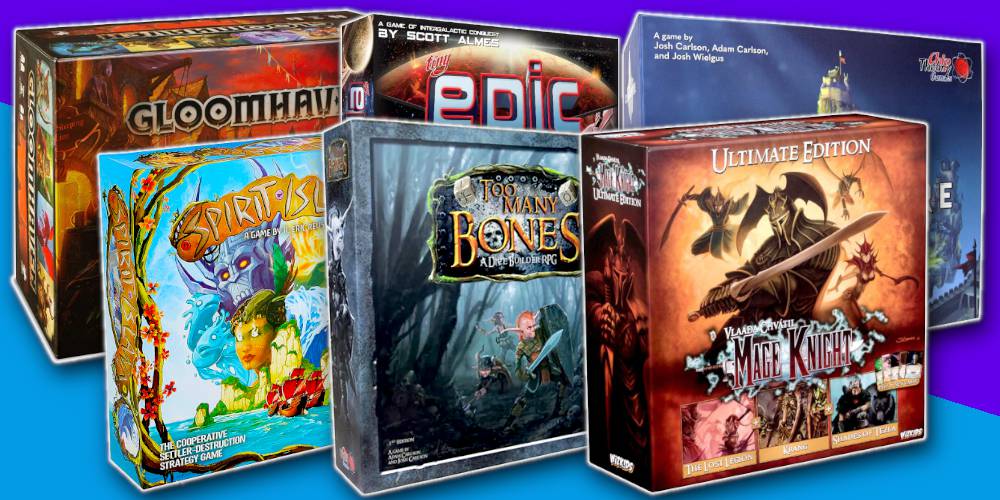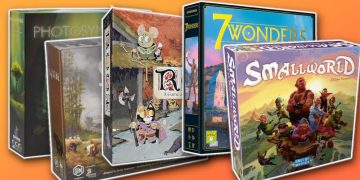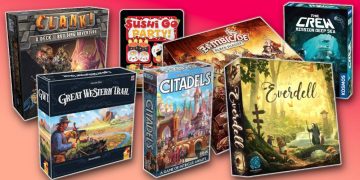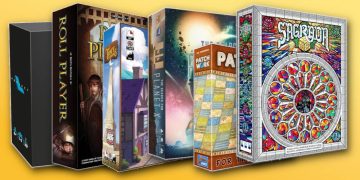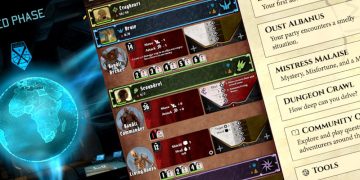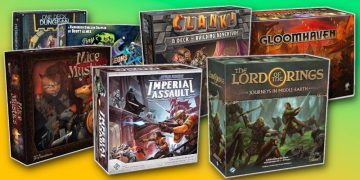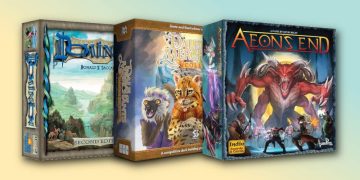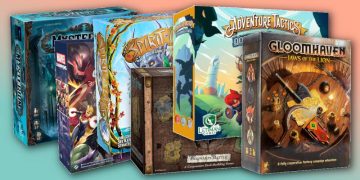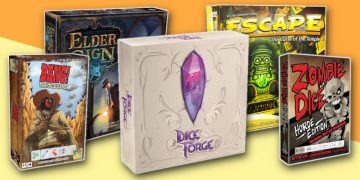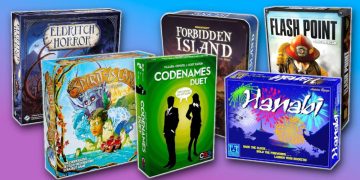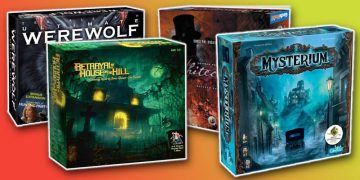It can be tough getting friends together for a game night.
If you don't know many people who are into board games, you might even have a tough time finding someone who stays interested long enough to play through a two-player game.
The good news is, there are plenty of excellent board games out there that are fantastic for their single-player experiences. Even better, most of them can scale up to more players for when you're able to have a game night.
Here are the best solo board games that you can play on your own, that are just as good—if not better—than they are at higher player counts.
Note: I'm focusing on board games that involve more than just cards. Looking for card-centric games you can play by yourself? Check out the best single-player card games.
15. Switch & Signal
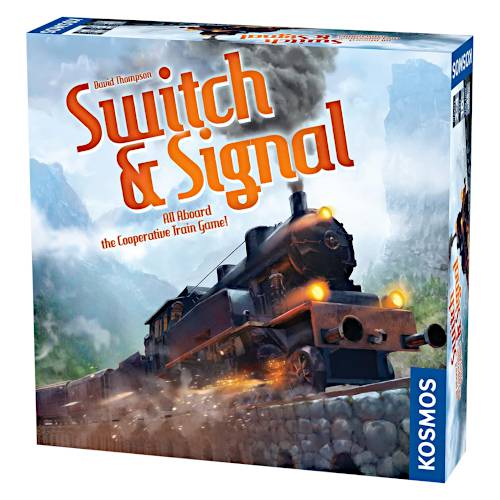
Designed by David Thompson
Supports 1 to 4 players
About 45 to 60 minutes
Simple complexity
Switch & Signal is a brilliant puzzle-type board game where you control trains by toggling signals and switches across the board. The goal is to pick up goods from cities and deliver them to the port city.
You do all this by playing action cards from your hand, with each card allowing you to do things like move trains, toggle switches, and toggle signals. Don't have the card you need? You can always play two of the same action card to take a different action.
The great thing about Switch & Signal is that it requires smart choices to win, but mistakes are rarely punishing. It's mentally engaging without being stressful, making it more of a leisurely kind of fun.
Switch & Signal can be played cooperatively with up to four players, but it really shines as a solo experience to play through at your own pace.
14. Tiny Epic Galaxies
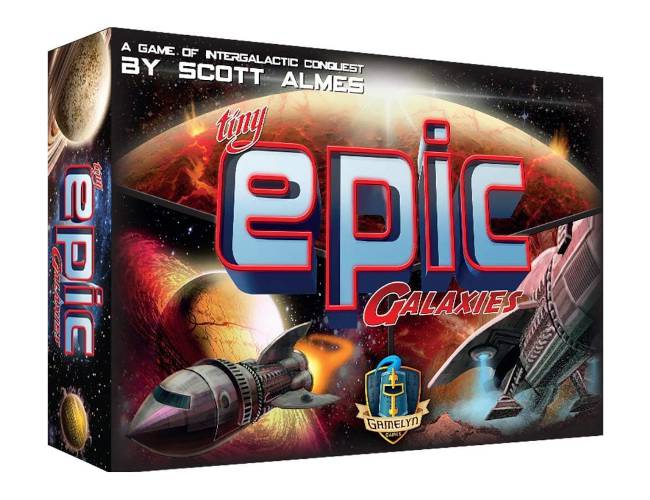
While many of the best solo board games are actually pretty complex and daunting, Tiny Epic Galaxies aims to be the opposite.
This is a space game of strategy and exploration, distilled down into a session that takes less than an hour to complete. It's easy to learn, easy to play, with little setup so it's easy to whip out on a whim.
In Tiny Epic Galaxies, you roll dice (with limited re-rolls) to determine your actions, and your goal is to colonize planets and add them to your empire to score victory points.
This game is meant to be enjoyed by kids and adults alike, so if you're looking for a breezy way to pass an afternoon, look no further.
13. The Isle of Cats
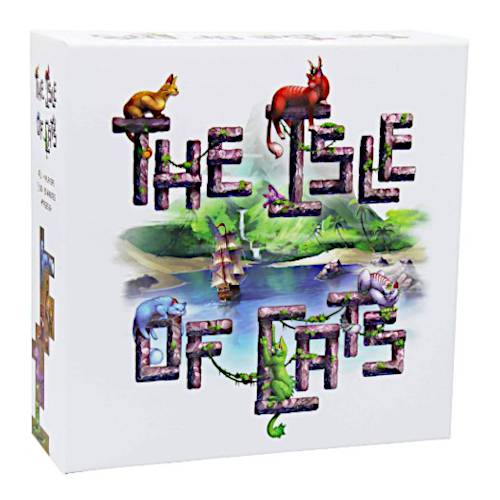
The Isle of Cats plays extremely well at all player counts (one to four), but it has a solid solo mode that slightly tweaks the rules so that you play against "your sister," which is basically like an AI.
The crux of The Isle of Cats involves spatial puzzle gameplay where you're trying to rescue cats from an island, but the cats are polymino-shaped and need to fit within the constraints of your ship and its rooms.
There's a lot more to it—including things like rats and treasures—but the solo experience is lovely if you're looking for a spatial puzzle-type game that's challenging but not an overwhelming brain-burner.
12. Marvel Zombies: Heroes' Resistance
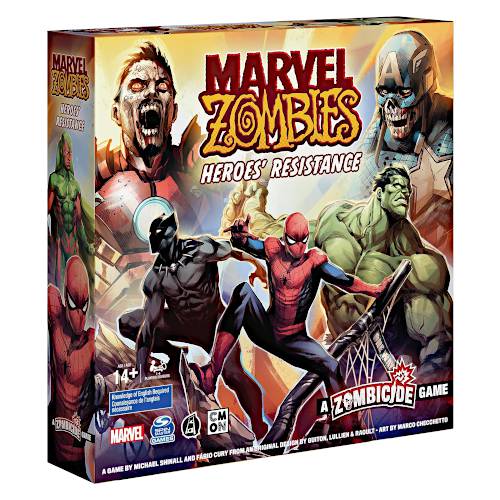
Designed by Fabio Cury and Michael Shinall
Supports 1 to 4 players
About 60 to 120 minutes
Moderate complexity
In 2022, the cult classic Zombicide series of board games got a new entry called Marvel Zombies: Heroes' Resistance, which improved on the Zombicide game mechanics while incorporating a Marvel theme.
The game comes with six Marvel superheroes—Hulk, Wasp, Vision, Black Panther, Spider-Man, and Winter Soldier—and each of them has special abilities to aid in the fight against zombie hordes.
Marvel Zombies: Heroes' Resistance comes with several different scenarios, each with its own victory conditions and gameplay twists. Regardless, you'll always be scavenging for loot and kicking zombie ass.
Like all the Zombicide games, Marvel Zombies: Heroes' Resistance is technically a cooperative game, but it's just as fun—if not more so—to play on your own and control everything yourself.
11. Cascadia
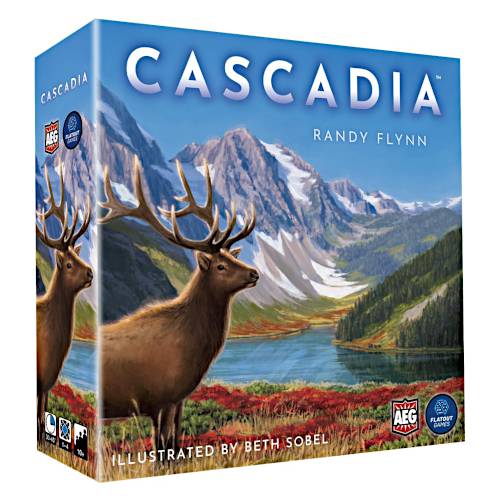
Cascadia is my personal favorite board game for weeknights when you've had a long day and just want to chill with a mild puzzle-type game that's engaging but not overwhelmingly thinky.
In Cascadia, you're building out your own national park using habitat tiles to create different habitat regions. On those tiles, you can place different types of animal tokens that represent wildlife in your park.
The thing is, habitats and animals score differently. Habitats only score for the largest contiguous regions of each habitat type, while animals only score if you can place the tokens in specific patterns (each animal type has its own unique pattern for scoring).
Cascadia is tactical but it's also relaxing and meditative. You can lose yourself in the puzzle, and when you're done, it's satisfying to see what you've built and how it all scores.
10. Super-Skill Pinball: 4-Cade
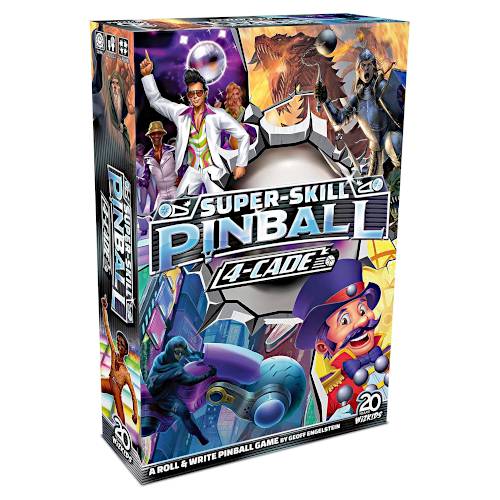
Designed by Geoff Engelstein
Supports 1 to 4 players
About 20 to 30 minutes
Moderate complexity
Of all the ways to translate pinball gameplay into a board game, the paper-and-pencil format is probably the farthest thing from what you'd expect. But, to everyone's surprise, it works extremely well!
Super-Skill Pinball: 4-Cade is played using a dry erase marker, a dry erase board with a pinball machine design, a pinball token, and two dice.
Every turn, you roll both dice and choose one. The die result determines where you can move your pinball token, and you'll mark off areas of the board as you bounce around and score points. Depending on what you mark off, you may also trigger special events.
Like in real pinball, your goal is to rack up as many points as you can before you run out of lives. Super-Skill Pinball: 4-Cade can be played with others, but it's best played solo so you can go at your own pace.
And the best part is that it comes with four pinball machine designs, with each one having its own unique gameplay twists. Super-Skill Pinball: 4-Cade is very affordable and packs a ton of value!
9. Clank! Catacombs
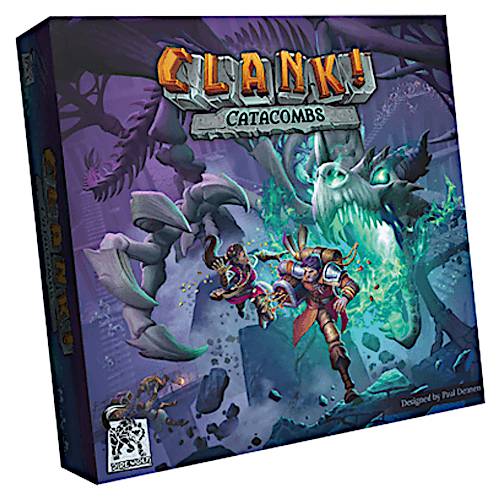
Designed by Paul Dennen
Supports 1 to 4 players
About 45 to 90 minutes
Moderate complexity
Until recently, there were three different Clank! games in the series: the original Clank!, then Clank! In! Space!, and then Clank! Legacy. The most recent one, Clank! Catacombs, blows them all out of the water.
Clank! Catacombs is kind of like a reboot. It shares most of the same gameplay as the previous games, but it's incompatible (so don't think of it as an expansion). The big change? Modular tile-based exploration instead of a fixed board with fixed locations.
In Clank! Catacombs, your goal is to delve into the dragon's lair and steal one of its artifacts, then make it back out safely. You move around and interact with the map using an evolving deck of cards.
Typically you play this with others in competitive fashion, but Clank! Catacombs (like previous versions) can be played solo if you download the free Dire Wolf Game Room mobile app.
8. Gloomhaven: Jaws of the Lion
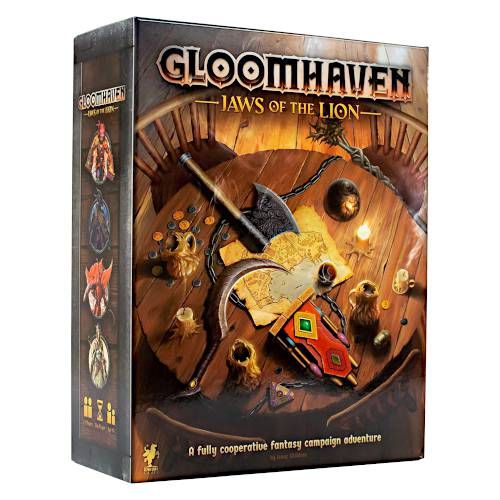
Designed by Isaac Childres
Supports 1 to 4 players
About 30 to 120 minutes
Advanced complexity
Tactical strategy is a popular genre of board games, but they're not usually known for being single-player games. Gloomhaven is one such game that's actually best at one player, depending on who you ask.
Gloomhaven: Jaws of the Lion is a standalone prequel to Gloomhaven that's significantly simpler but retains much of the core goodness that made Gloomhaven so great, including the campaign-style story.
In Gloomhaven: Jaws of the Lion, you play as heroes who are investigating mysterious disappearances in the city. Your characters advance across multiple scenarios that form an overarching campaign.
This is far from a quick game, and even on your own you'll want to set aside up to two hours per scenario. After the five-scenario tutorial, you'll start to see how deep it is—and how satisfying it is.
7. Mage Knight (Ultimate Edition)
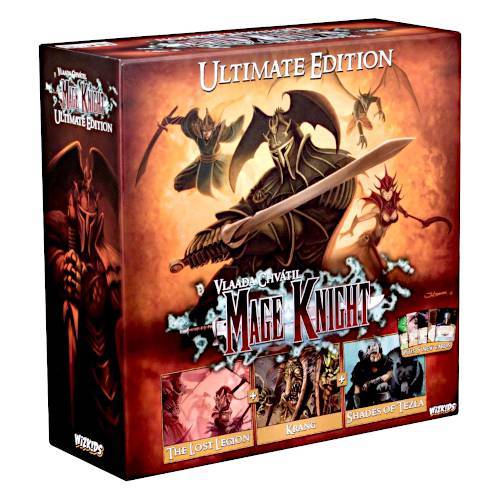
Designed by Vlaada Chvátil, Paul Grogan, Phil Pettifer
Supports 1 to 5 players
About 120 to 180 minutes
Extreme complexity
Mage Knight is one of the greatest solo board gaming experiences of all time. It's substantially more complex than most board games, but if you can get over the learning curve, it can be amazing.
In this game, you play as a Mage Knight who leads an army as you explore the lands and conquer various cities. In practice, Mage Knight is an intense puzzle with lots of moving parts. That's why it's best played solo! You'll need time to deliberate over your actions.
Mage Knight (Ultimate Edition) includes the base game as well as the three expansions, which provides way more content to enjoy—whether you're playing alone or as a group—at a better value.
6. Cloudspire
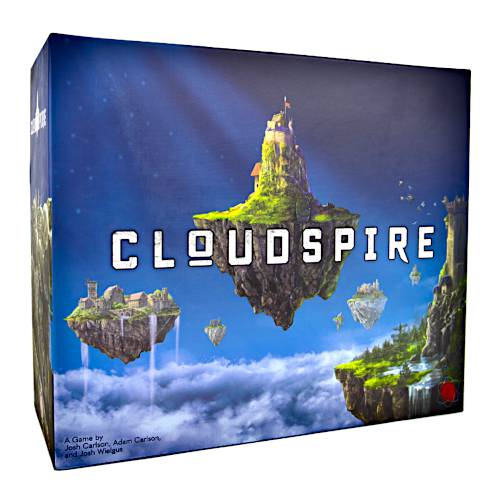
Designed by Josh J. Carlson, Adam Carlson, Josh Wielgus
Supports 1 to 4 players
About 90 to 180 minutes
Extreme complexity
Cloudspire is a fantastic strategy board game that's heavily inspired by MOBA video games (think League of Legends). It can be played with up to four players, but it also supports solo play.
You have a fortress that you need to defend, and you do so by placing spires on the map and maneuvering your hero and minions around. Take down the enemy's fortress to win!
What's interesting in Cloudspire is that units are represented by chips (similar to poker chips) and they can be stacked to hide the units that are within a stack. Heroes can also upgrade over the course of play.
And did I mention the map is modular? That means there are multiple ways to set up the battlefield, lending to much greater replayability. For solo strategy board games, Cloudspire is one of the best.
5. Too Many Bones
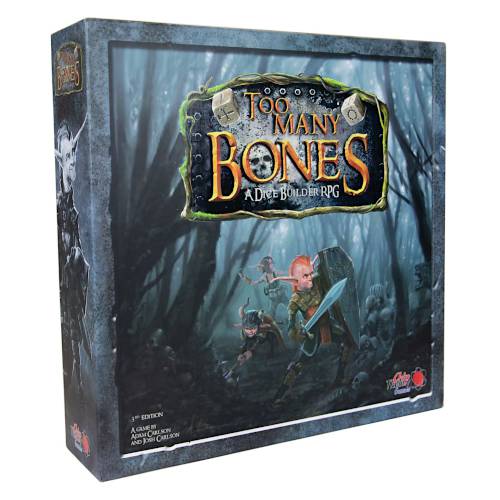
Designed by Josh J. Carlson and Adam Carlson
Supports 1 to 4 players
About 60 to 120 minutes
Extreme complexity
Too Many Bones is one of the greatest dungeon crawl board games ever made—and that might be surprising when you realize that most of this game is played using dice.
Yes, there are hundreds of dice included with Too Many Bones, but they're all custom dice that are used for way more than just numeric rolling—they represent everything in the game.
Too Many Bones is a campaign-based RPG-style board game where you choose a class, level up your abilities, battle your way through enemies, and attempt to take down bosses.
And once you've experienced everything in the base campaign, there are multiple expansions to keep you going with new content and mechanics. (40 Days in Daelore is particularly good for solo play.)
4. Sleeping Gods
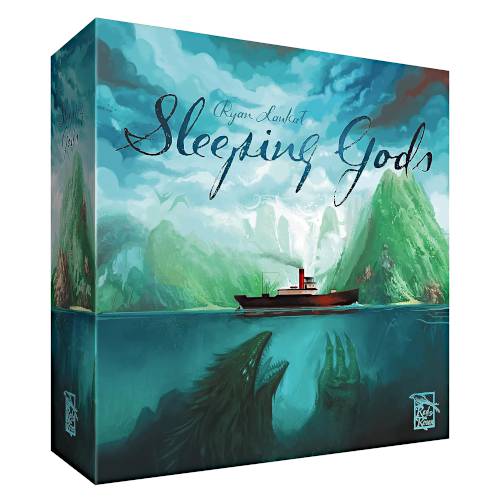
Designed by Ryan Laukat
Supports 1 to 4 players
About 60 to 120 minutes
Advanced complexity
Of all the narrative-centric board games I've seen, Sleeping Gods sits at the top as king of story and exploration.
In this cooperative adventure—which can certainly be played solo—you play as crew aboard the Manticore, a 1929 steamship that's lost in a world of islands and mystical gods.
Every game is one session in a large campaign. As you explore the world, you'll encounter hundreds of "keywords" that each come into play elsewhere in the world, unlocking secrets and stories.
Sleeping Gods is a massive tale that beckons you to explore every corner and every crevice—and even after you think you have, you can play it again and discover tons more that remained unfound.
3. Chronicles of Crime
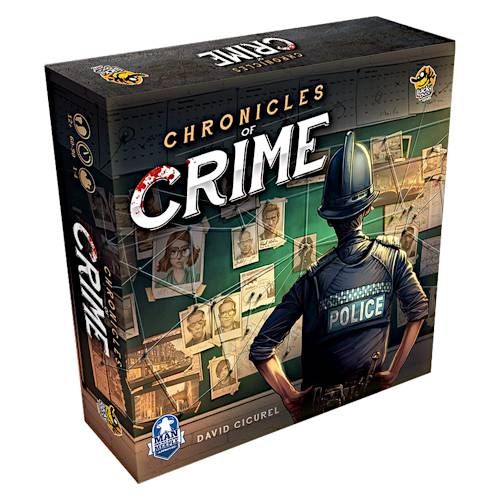
Designed by David Cicurel
Supports 1 to 4 players
About 60 to 90 minutes
Moderate complexity
If your idea of a fun time involves hunting down clues, piecing details together, and solving intricate mysteries that go deeper than what you'd expect—then Chronicles of Crime is a must-play.
This cooperative detective game is even better played alone, as you get to really feel like Sherlock Holmes on your own.
Chronicles of Crime includes a bunch of different suspect cards and locations, each with unique QR codes. The crux of the game involves scanning QR codes, which represents you visiting locations (to examine for clues and meet people) and talking to individuals.
As you visit places and chat with people, more information unfolds and you can discover more clues and suspects start behaving in different ways. The game evolves with your knowledge—and it's amazing.
With regard to immersive detective board game experiences, nothing comes close to the thrills and satisfaction in Chronicles of Crime.
2. Hadrian's Wall
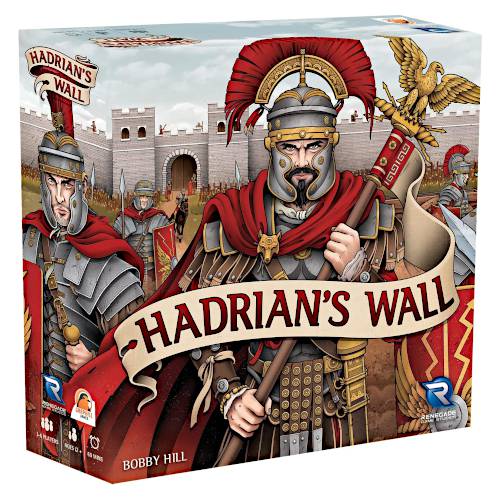
Despite only taking around an hour or less to play, Hadrian's Wall is surprisingly deep with lots of complex decisions that are satisfying to crunch out once you've grasped how the game plays.
And what's most impressive is that this is a paper-and-pencil game! Who'd have thought so much depth could be crammed into two sheets of paper? Kudos to Bobby Hill for designing this masterpiece.
Hadrian's Wall plays over six rounds, with each round representing one year as a Roman General. You'll be constructing a fort and defending it against attackers, all while trying to keep civilians happy.
When played solo, Hadrian's Wall is a beat-your-own-score game, but it works really well because no two games are ever the same. It's more than just a rote optimization puzzle, and that keeps it interesting.
1. Spirit Island
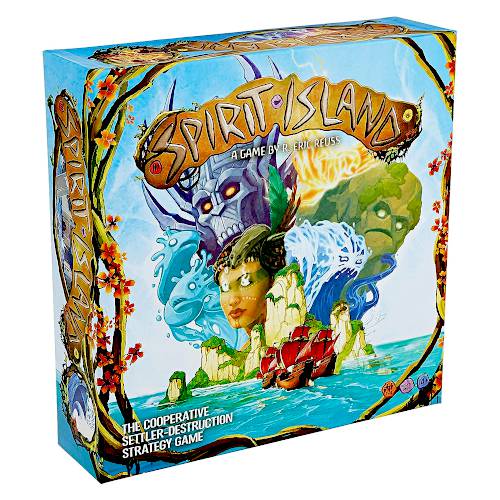
Designed by R. Eric Reuss
Supports 1 to 4 players
About 90 to 150 minutes
Advanced complexity
Ever since it first released in 2017, Spirit Island has been one of the most popular board games with one of the strongest fan bases in the hobby—and for good reason!
Spirit Island is substantially complex with lots of moving pieces, but the ultimate goal is always crystal clear: you are a god-like island spirit and must use your abilities to fend off invading colonizers for good.
There's so much depth that comes from its mixture of many game mechanics (primarily hand management and area control). You have a lot to consider every turn, which makes for vast possibilities.
Combine all that with its modular board setup and numerous spirits that each feel truly unique with entirely different abilities and play styles? You have a board game with unmatched replayability.
Spirit Island can be played cooperatively and it's really good with two players, but many hobbyists play it alone. You can rack up hundreds of plays and still feel like you haven't experienced everything.
